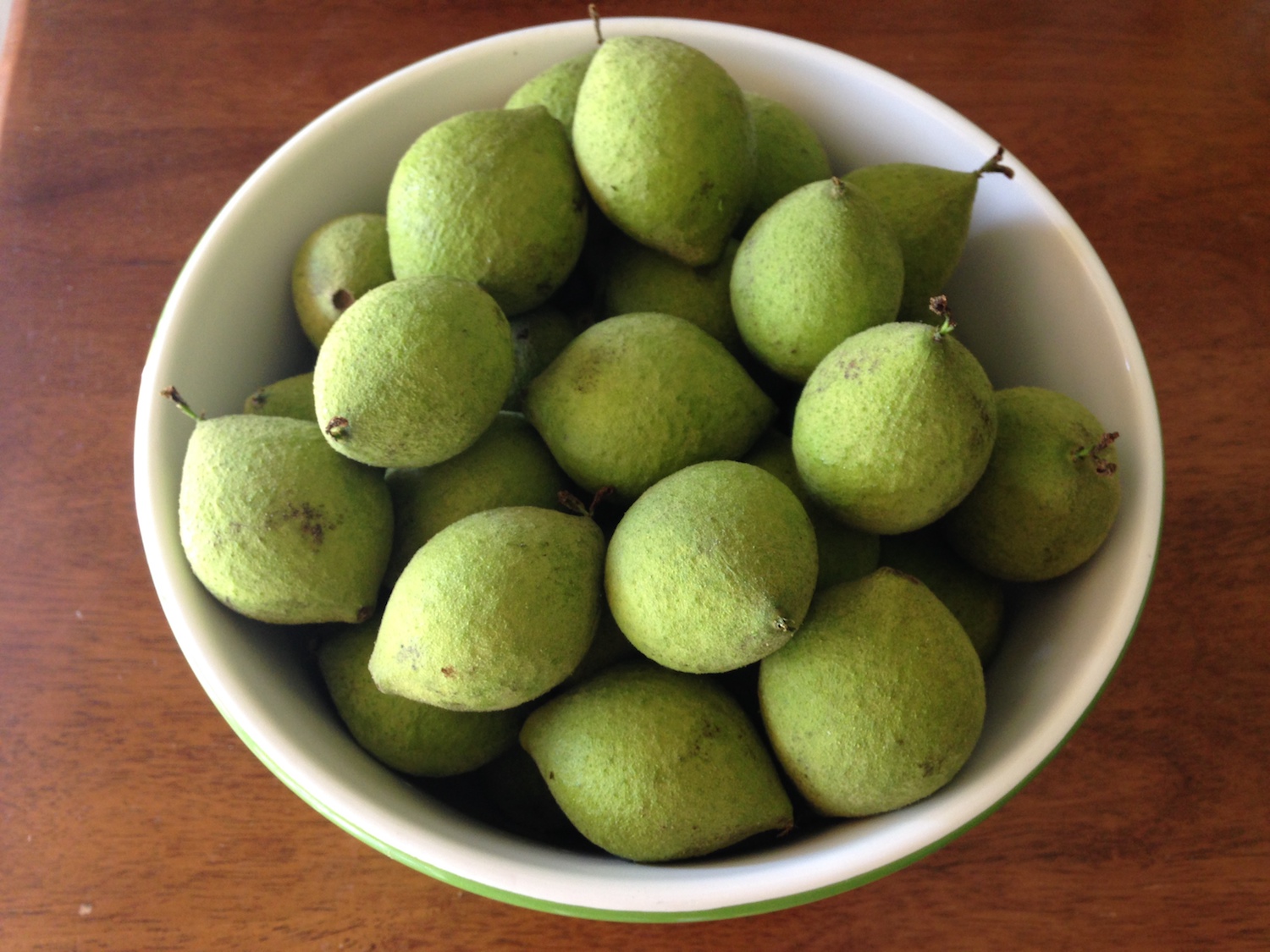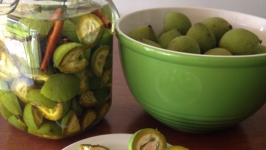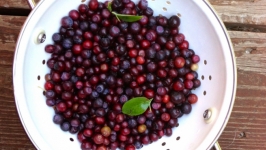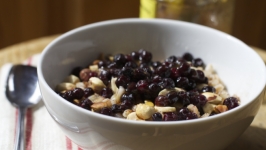Walnut Alchemy: Simple Steps Create Bold Italian Liqueur
On a midsummer amble thorough Boise’s North End I paused under a leafy walnut canopy. The branches were drooping with dozens of bumpy green orbs that were on their way to becoming bitter black walnuts.
Plucking one from the tree and turning it over in my hand—breathing in the pungent, Pine Sol-y smell—I remembered an article I’d read on nocino, an Italian liqueur made from unripe green walnuts.
Italian tradition dictates that nocino be made each year on the 24th of June, or Saint John’s Day. The sweet, tarry black liqueur is crafted from unripe green walnuts that are infused with sugar and spices in neutral grain spirits and then bottle-aged. The resulting liqueur is a complex, aromatic digestif that’s often enjoyed in the wintertime, either chilled or drizzled on creamy, custardy desserts.
June 24 is said to be the best time to pick walnuts for making nocino because they’re still bright green and haven’t yet formed their hard interior shells. Though it was a couple weeks past June 24, I decided to try my hand.
Gingerly, I gathered 30 green walnuts in a paper bag and brought them home. Rounding up a pair of old gloves and a cutting board I didn’t care too much about, I went about chopping up the walnuts. Though the inside of a halved walnut looks a bit like a plant brain—with a wavy, ivory interior encircled by a bright green rim—the pieces brown quickly and the juices will easily stain both your hands and the cutting board.
After I’d quartered the 30 walnuts, I placed them in a glass jar with a sealable lid and dumped a 750-milliliter bottle of 100-proof vodka on top. I dropped in two cinnamon sticks, 10 cloves, a quarter of a nutmeg seed, a vanilla pod and a few slivers of lemon peel and shook the jar to mix everything together.
After a few minutes, the vodka had already started to leech a yellowy chartreuse hue from the walnuts. After three weeks on the windowsill, the concoction had turned a dark, tobacco black with bits of green walnut pressed against the glass like a sinister science experiment. I opened the lid and dipped a spoon inside, which emerged coated in a dark green-ish liquid that tasted a bit like bitters. The strange brew seemed like it would be more at home bubbling inside a cauldron.
After 40 days, I strained out the mushy black walnut chunks and stained spices, then added a simple syrup consisting of two cups of sugar dissolved in two cups of water. The sweetened mixture was much more palatable than the initial taste, with notes of cinnamon and nutmeg shining through. I poured the sweetened concoction into a couple of dark glass bottles, corked them and pushed them into the back recesses of my liquor cabinet to rest.
From everything I’ve read about nocino, the liqueur tastes best after it’s had time to mellow out in the bottle. This can range anywhere from a few months to a few years, if you’re super patient. I plan to break it out this holiday season, when a warming, nutty tipple might bring back memories of lazy summer walks and boozy science experiments.









